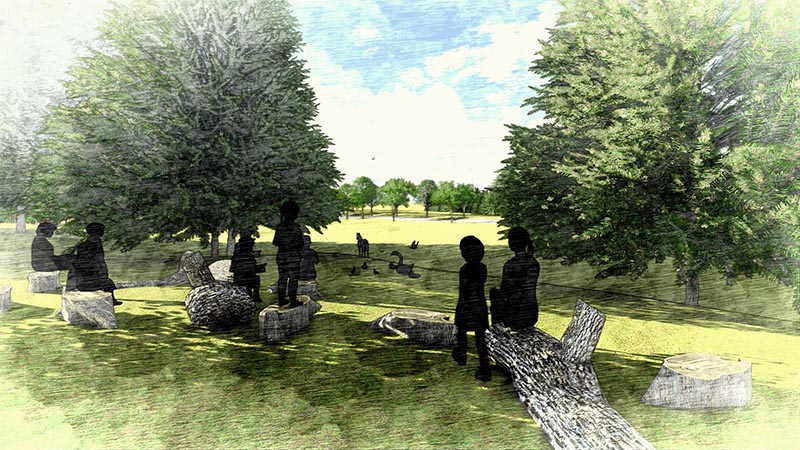Recently, we have been asking ourselves how to design to support the educational philosophy of curiosity and nature-based learning for a new independent elementary school called Slate School. When designing for a school, in particular, it’s essential to strongly adhere to its core principles in order to create the best environment for learning. To this end, we begin with the climate, natural landscape, and unique elements of a property and start to devise ways to bring the outside in.
Nature as Motivator
Slate School will sit on a 25-acre plot of land in North Haven, Connecticut, that features forest, open meadowlands, and organic gardens. In addition to designing the school to adhere to sustainable principles and LEED Platinum certification standards, we saw ample opportunity to partner with its beautiful landscape.
Building design strategies such as solar orientation, natural ventilation, daylighting and circadian lighting will benefit and enhance the learning potential for the students. Existing landscape elements will be kept intact to promote exploration, such as an adjoining wetland area, meadows, and a ring of mature deciduous and coniferous trees.
Abundant, triple-glazed windows allow for ample daylight, fresh air, and nature views in each school building. And a strong focus on blurring the lines between indoor and outdoor spaces helps engage students in learning about their place in the natural world.
Courtyard as Center

We have chosen to create a courtyard space, sheltered from wind and sun, around which the buildings most used by the younger children are placed. An enclosed playground will sit adjacent to the kindergarten classroom. Further away are two more classrooms that face a meadow to the south, where we have located a larger playground for older children.
The courtyard becomes the center, visible from classrooms, surrounded by a pergola, and used for informal teaching areas, gatherings, and play. Beyond the courtyard, a series of organic flower gardens, rain gardens, and meadows will create opportunities for imaginative learning and spontaneous play.
Classrooms with Views

Classrooms are configured with their broad, windowed side facing either the courtyard or a meadow to the south. This maximizes natural light and creates a visual connection to the outdoors all day. Children are very much aware of and curious about their environment—the climate, the seasons, the growing patterns of vegetation and small animals living there.
Playgrounds to Encourage Curiosity

There are two playgrounds at the school, both built of northern white cedar. The smaller one is enclosed and encourages playing and climbing up for views of the surrounding site. A larger one for the older children is located in a meadow adjacent to the upper classrooms and requires running through the meadow to reach it. From the higher towers, views are more expansive and offer a learning opportunity about the various landscapes close by—whether formally or intuitively.
Informal learning in nature

School children will experience the varied ecosystems of the property—woodland and meadow wetlands, canopy forest, and meadows. Along the way, we are proposing very light landscape design which encourages children to be curious, to contemplate, and to learn about their environment.
For a deep dive into our sustainable design of Slate School, please read our companion blog Sustainable Design for a New Elementary School.

